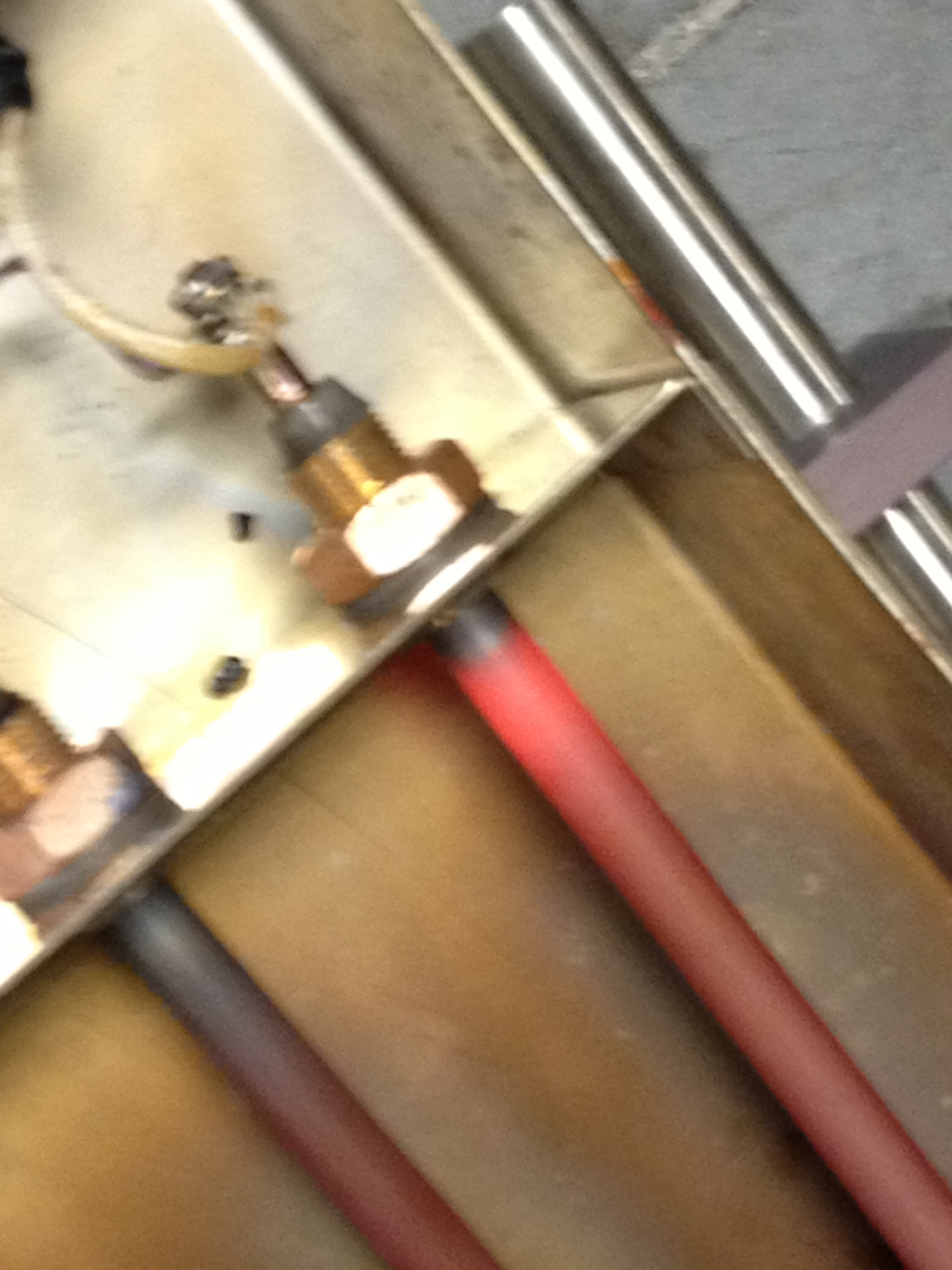Cold Section of a Heating Element
A tubular heater can be made of many different types of materials. The majority of uses are stainless steel however you can also have them made in steel, copper, titanium and even hastalloy for special applications.
Cold Section of a Heating Element
The element is made up of a resistance coil (NiCr) that is wound up inside a tube. Magnesium Oxide is a powdery substance that allows the heat flow quickly from the coil to the the outer sheath of the tube. Pins are also used to hold the coil in place and, to keep the coil straight within the tube.
Once the tube is filled with MgO and a resistive coil, the tube is annealed so that it can be bent to certain shapes. If you look at your stove, the shape of the element is circular. The reason the element is black, is because it has been placed in an oven at high temperatures to allow it to be bent.
What is crucial is to make sure you have a good cold section on each end of the tubular heater. Enough cold section is required so that the heat that is generated does not travel close to the terminals as shown in the illustration below.

A good cold section allows for enough space so that the heat is contained in a specific range. Tubular elements also come in a variety of diameters. The most common is 0.315 inch however 0.430 inch and 0.475 are increasinly popular given the heavy industrial applications they are involvded with.
If you have a liquid that needs to be viscous, you can play with the diameter to get a good watt density. The lower the watt density, the longer it takes for the heating element to get red. It is a gradual heating that is sometimes necessary for thicker liquids like molasses or tar..
